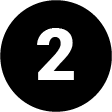
Chosen one: the rise of Pope Leo XIV
Chosen one:
the rise of Pope Leo XIV
On May 8, 2025, history was made as Cardinal Robert Prevost became the first US-born pope, taking the name Pope Leo XIV. His election as the 267th pope at a Vatican papal conclave followed the death of Pope Francis at 88 a month earlier. Known for his career ministering in Peru and his leadership of the Vatican’s powerful office of bishops, Leo’s rise marks another pivotal moment for the Catholic Church. Here is a closer look at Pope Leo’s life, and how he was picked to be spiritual leader of the world’s 1.4 billion Catholics.
Leo: what’s in a name?
Pope Leo XIV explained his choice of name reflected a commitment to social causes championed by Leo XIII, who defended workers’ rights, according to the Vatican. Leo XIII, the last pope to bear the name, led the Catholic Church from 1878 to 1903, during the Gilded Age and the Second Industrial Revolution.
Pope Leo XIV added that modern challenges, including a new Industrial Revolution and advancements in artificial intelligence, required renewed efforts to uphold human dignity, justice and labour rights.
Traditionally, new popes have tended to choose the name of the pope who had elevated them to cardinal. The most common names have been John (21 popes), Benedict, and Gregory (16 each).
Biography of Pope Leo XIV
Popes of the past 100 years
Who voted, and how?
Out of 252 College of Cardinals members, 135 were eligible to vote in the conclave (under 80 years old). Ultimately, 133 cardinals participated in the vote, as two were excused due to health issues.
Electing a pope
Papal conclaves, excluding the first day with one ballot, involve two daily balloting sessions - two votes each in the morning and afternoon - until a candidate achieves at least a two-thirds majority. Voting is secret. Modern papal conclaves are typically short. The average length of the last 10 conclaves was 3.2 days and none went on for more than five.
Pope Leo XIV was elected after four rounds of voting across two days.
The 2013 conclave that elected Pope Francis lasted two days, as did the 2005 conclave for Pope Benedict XVI, although he needed just four ballots to reach the two-thirds majority, while Francis needed five.
The longest papal election in history was the conclave of 1268-1271. It lasted for two years, nine months and two days before Pope Gregory X was elected. The October 1503 conclave for Pope Julius II was one of the shortest, lasting only hours on the first day.
Domus Sanctae Marthae
Completed in the 1990s near St Peter's Basilica, this building housed most cardinal electors during conclaves and was home to the late Pope Francis.St Peter’s Basilica
Cardinals celebrated a special mass in St Peter’s Basilica, the church at the heart of Roman Catholicism, before the start of the conclave.Via delle Fondamenta
Following the mass, the cardinals walked in procession to the Sistine Chapel singing the hymn Veni Creator Spiritus (“Come Creator Spirit”) in Latin to invoke the Holy Spirit.Sistine Chapel
1492 conclave first to be held here. Site of all conclaves since 1878.Balcony of St Peter's Basilica.
Pope appeared to the world for the first time on the main balcony of the basilica, to a cry of Habemus Papam! (“We have a pope!"). He then delivered his first blessing.St Peter’s Square
Faithful gathered in St Peter's Square during the conclave, as they waited for white smoke to emerge from the chimney of the Sistine Chapel.Sistine Chapel
The basilica, one of the largest churches in the world, is a jewel of Renaissance architecture and contains the tomb of St Peter - the first pope.
Situated inside the Apostolic Palace in the Vatican, this 15th-century chapel is world-renowned for its spectacular ceiling frescoes by Michelangelo.




